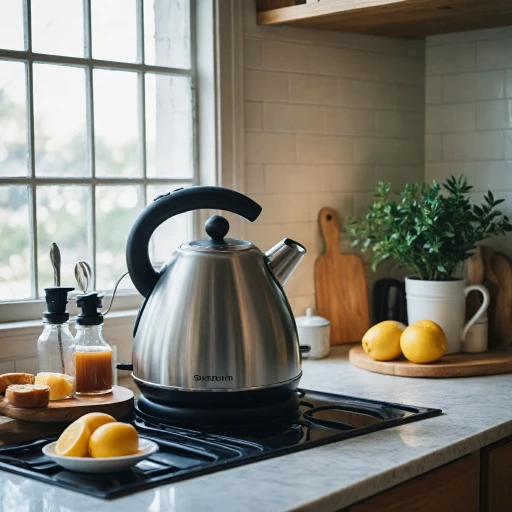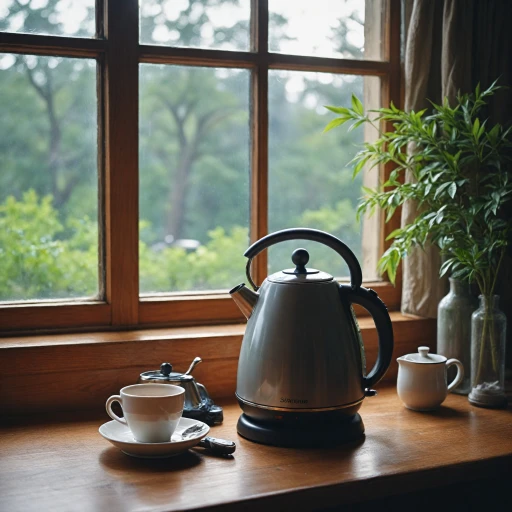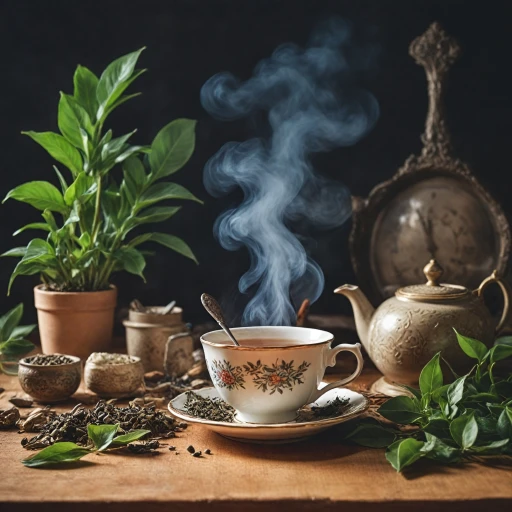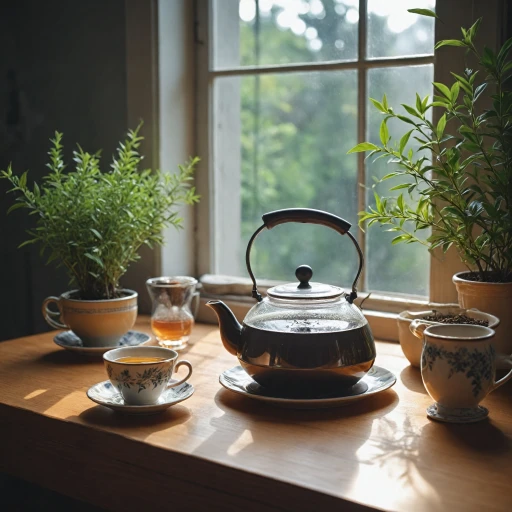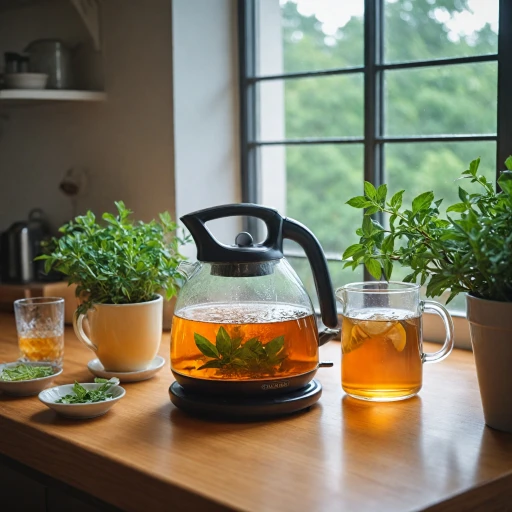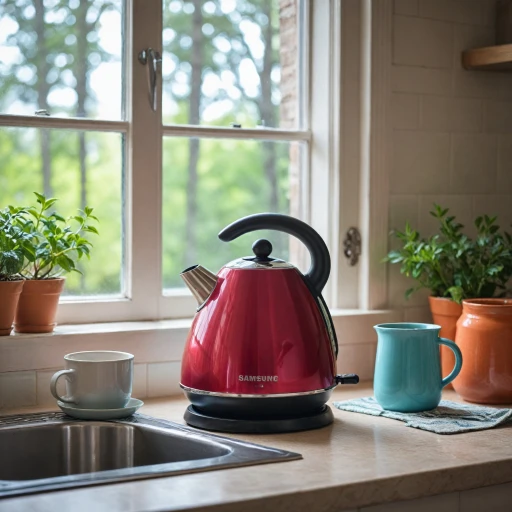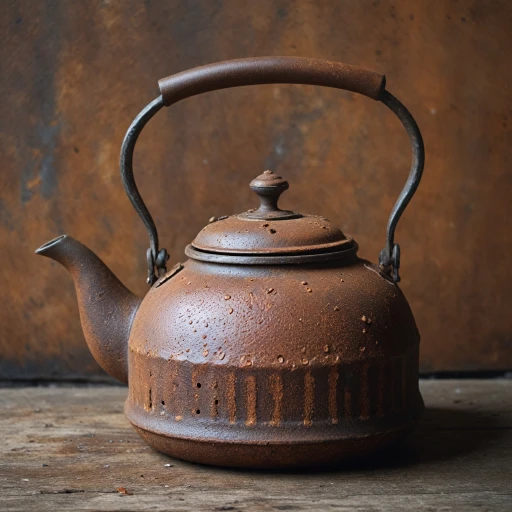
Understanding the Importance of Water Temperature in Tea Brewing
Brewing the perfect cup of tea is an art influenced by many factors, with water temperature being paramount. The right temperature ensures the full essence and flavor of tea leaves are extracted, making a substantial difference in the final taste of your cup of tea. Whether you're a fan of black tea, green tea, white tea, or oolong tea, each type requires specific temperatures to release its best qualities.
Why Temperature Matters in Tea Brewing
For avid tea drinkers, using boiling water on all tea types might sound convenient, but it can actually be detrimental to the delicacy of certain teas, leading to bitterness or an overly strong brew. When water is either too hot or not hot enough, it fails to extract the balanced flavors and aromas that loose leaf teas have to offer.
Different types of tea react distinctively to water heat:
- Black teas: Generally require nearly boiling water around 200-212°F (93-100°C).
- Green teas: Best brewed at lower temperatures, approximately 150-180°F (65-80°C). This preserves the tea’s delicate taste and prevents it from becoming bitter.
- White teas: Prefer even cooler water at 160-185°F (71-85°C) to maintain their subtle flavors.
- Herbal teas: While some can withstand boiling water, others might require lower tea water temperatures similar to green teas.
Understanding these ideal brewing temperatures allows tea enthusiasts to customize their brewing process, enhancing their overall tea experience. If you’re keen to delve deeper into optimizing your tea brewing skills, consider mastering electric kettle techniques.
Types of Tea and Their Ideal Brewing Temperatures
Exploring Ideal Temperatures for Various Teas
Tea lovers, whether you prefer black, green, or oolong, know the significance of getting the temperatures right. It's crucial for unlocking the full flavor of your cup.- Black Tea: Typically, this type of tea requires the hottest water. Boiling water around 212°F (100°C) is ideal for steeping black tea leaves, ensuring a robust flavor profile.
- Green Tea: Unlike black tea, green tea thrives at a lower temperature, ranging from 158-176°F (70-80°C). Steeping at this range prevents the leaves from becoming bitter.
- White Tea: Known for its subtlety, white tea should be brewed with water tempered to 149-158°F (65-70°C) for a delicate taste.
- Oolong Tea: Oolong tea falls between black and green tea. A water temperature between 185-194°F (85-90°C) will bring out its unique aroma.
- Herbal Tea: Because it isn’t true tea, herbal tea adapts well to boiling water temperatures, though letting it steep a bit longer often elevates the experience.
How Electric Kettles Enhance Precision in Tea Brewing
Precision is Key: How Electric Kettles Revolutionize Tea Brewing
Electric kettles have become an indispensable tool for tea enthusiasts, greatly enhancing the precision with which tea can be brewed. If you’re serious about your tea, you know that the water temperature is crucial for extracting the best flavors from different types of tea.
Electric kettles come equipped with adjustable temperature settings, allowing you to customize the water temperature to suit your chosen tea’s ideal brewing needs. With the touch of a button, you can select the perfect setting for green tea, black tea, white tea, oolong tea, or even herbal teas. This precision ensures that your tea leaves will not be scorched, preserving the delicate flavors for a perfect cup every time.
- Green Tea: Generally requires water temperatures between 150°F and 180°F. Boiling water can burn the leaves, resulting in a bitter cup.
- Black Tea: This hearty tea can handle a hotter temperature, ideally around 200°F to 212°F, allowing for a robust brew.
- White Tea: Delicate with subtle flavors, best brewed with water around 160°F to 185°F.
- Oolong Tea: Requires care with temperatures ranging from 180°F to 200°F, depending on the variety.
- Herbal Tea: These teas are more forgiving and can usually be brewed with boiling water.
Moreover, electric kettles are efficient, reducing boiling time significantly compared to stovetop kettles. This energy-saving feature not only ensures you have your cup of tea ready in minutes but also conserves energy, making it a cost-effective choice.
With regular sales and the availability of units at varying price ranges, finding a kettle that fits your budget while fulfilling your needs is easier than ever. Consider investing in a kettle that offers features tailored to your type of tea, ensuring each cup you brew is perfect.
For further tips on optimizing your kettle's performance, it's wise to refer to reputable sources specializing in electric kettles.
Choosing the Right Electric Kettle for Tea Brewing
Finding the Perfect Kettle for Your Tea Needs
Choosing the right electric kettle can make a significant difference in your tea brewing experience. With so many options available, it's essential to consider a few key factors to ensure you get the best unit for your needs.
- Temperature Control: For optimal tea brewing, look for a kettle with adjustable temperature settings. Different types of tea, such as green tea, black tea, and white tea, require specific water temperatures to bring out their best flavors. A kettle with precise temperature control will allow you to brew each type of tea at its ideal temperature.
- Speed and Efficiency: Consider how quickly the kettle can bring water to the desired temperature. A fast-boiling kettle saves time, especially if you enjoy multiple cups of tea throughout the day.
- Capacity: Think about how much tea you typically brew at once. If you often make tea for several people, a larger capacity kettle might be more convenient. However, for personal use, a smaller unit might suffice.
- Material and Build Quality: The material of the kettle can affect the taste of your tea. Stainless steel and glass are popular choices as they do not impart any flavors to the water. Ensure the build quality is robust for long-lasting performance.
- Price Considerations: Electric kettles come in a range of prices. While it's tempting to go for the cheapest option, investing in a quality kettle can enhance your tea brewing experience. Look for sales or discounts to get a better price.
By considering these factors, you can select an electric kettle that not only meets your brewing needs but also enhances the overall tea experience. Remember, the right kettle can make all the difference in achieving the perfect cup of tea.
Common Mistakes in Tea Brewing and How to Avoid Them
Common Brewing Mistakes and Their Impact
When it comes to making that perfect cup of tea, even the slightest misstep can significantly affect the flavor and aroma. Here are some frequent mistakes and how they can impact your tea experience:
- Using Boiling Water: Despite popular belief, not all teas require boiling water. Specifically, delicate types like green tea and white tea can become bitter if brewed with excessively hot water. Knowing the right water temperature for your chosen tea leaves is essential.
- Over or Under Steeping: Brewing time is crucial. While black teas often thrive with a longer steep, leaving green or herbal teas steeping for too many minutes will result in undesirable flavors. As a general guide, white teas and oolong tea require precise timing for optimal taste.
- Incorrect Tea-to-Water Ratio: Not all cups of tea should be brewed with the same quantity of leaves. A common mistake is using either too few or too many tea leaves, which affects both the strength and smoothness of the brew.
Strategies to Avoid Brewing Errors
Here’s how you can prevent these common missteps:
- Temperature Control: Invest in or pay attention to electric kettle features that allow setting precise tea temperatures. This will help with getting the correct heat for each type tea you are preparing.
- Timer Setup: Utilize a timer when brewing to ensure the tea leaves aren’t soaked too little or too much time. Some electric kettles include timing features to facilitate this process.
- Proper Measurement Tools: Consider using a measuring spoon to get the unit price by weight for your loose leaf tea, ensuring the cup tea you're making isn't overpowering or too weak when brewing.
- Adjusting for Price Ranges: Remember that the regular price difference between teas can guide expectation. A higher price often reflects leaves requiring more care in the brewing process.
By addressing these areas, you will optimize your tea brewing, achieving a smoother, more flavorful tea experience every time. These adjustments make a marked improvement, enhancing your daily tea ritual.
Maintaining Your Electric Kettle for Optimal Performance
Keeping Your Kettle in Great Shape
Maintaining your electric kettle is essential not just for preserving its performance, but also for ensuring that your tea brewing experience remains top-notch. A well-maintained kettle helps in achieving the ideal water temperature, crucial for different types of tea like black, green, white, oolong, and herbal.
Regular Cleaning
It's important to clean your electric kettle regularly to avoid mineral buildup. Hard water is the main culprit that causes scaling in kettles. Here are some simple steps to maintain your kettle:
- Descaling: Once a month, fill your kettle with a mixture of equal parts water and vinegar. Boil the mixture and then let it cool. Rinse thoroughly with clean water to remove any residue.
- Cleaning the Exterior: Use a damp cloth to wipe down the outside of your kettle. Avoid abrasive cleaners that might scratch the surface.
Proper Usage
Using your electric kettle correctly can prolong its lifespan and improve your tea's taste:
- Don't Overfill: Ensure that you only fill your kettle to the maximum fill line, as overfilling can cause water to spill and possibly damage the electrical components.
- Avoid Running Dry: Always keep an eye on your water level. Avoid turning the kettle on without any water, as this can damage the heating elements.
Storage Tips
When not in use, store your kettle in a dry area to prevent moisture from causing any internal damage. Wind the cord neatly to keep your counter space organized and to avoid fraying of the power cord.
Understanding Wear and Tear
Regular use can gradually affect the performance of your electric kettle. If you notice that your kettle takes longer to boil water or doesn’t reach the desired temperature for brewing your cup, it may be time to consider getting a new one. Keep an eye out for signs of wear and tear, especially around the lid and handle.
The right maintenance ensures that your electric kettle will consistently heat water to your desired temperature, enhancing the taste and experience of your delightful cup of tea.


